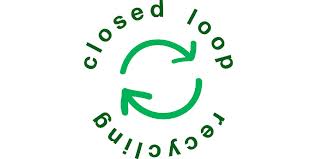Recycling is a large part of society today, as we become more aware of the limit on natural resources and the impact we have on our environment. Recycling takes place in every area of our society from the recycling bins in the supermarket for old bags to the old paper and plastic designated bins on the high street, and lets not forget the recycling that takes place in our homes. Whilst we can reuse food waste in compost heaps and old papers can be used for anything from fish and chip wrappers to hamster bedding, plastic is one of the harder to reuse materials.MachinesReview
The Recycling Process
The original recycling logo was created in 1970 by Gary Anderson and though it can stand for “Reduce, Reuse, Recycle” more often than not it stands for the closed loop system in recycling – Collection, Manufacturing and Purchasing. The collection relies on both the local councils and public to deliver the used products to a point where the factories can collect them, Manufacturing is the processing of the waste – using the example of plastic it can be melted down and used to create new bottles, plastic lumber or even polyester for clothes. Finally the purchasing of the product by the general public.
Closing the loop
Closing the loop in recycling terms is taking used products, processing them into a new, usable item and then selling them back to the public. This system relies on two main points; that enough recyclable waste can be collected from society and that the new product that is created from the waste materials is in big enough demand with the public that they will buy it – this enables funding so the loop can carry on.
Benefits of a closed loop
You may think that its costly to recycle… it actually isn’t that expensive to carry on with the closed loop recycling system as it eliminates the need for “virgin” materials. Oil doesn’t need to be refines and processed to create plastic, because the plastic is already there from the waste product. Not only does this conserve natural resources, it means the end product is going to cost less for you the consumer.
Fabulous by products
Using the idea from before of plastic, the benefits of closed loop recycling have given us not only polyester for clothing but also plastic lumber, a material that has a multitude of uses; signs, benches, bins, decking, board walks and window frames to name a few. The fact that plastic lumber will also not leak any chemicals into the environment and is resistant to graffiti (most paint and spray paint can be washed off with a simple solution and a sponge!) as well as meeting government safety standards for areas of high pedestrian traffic and the array of colours and treatments available for it just means that it can be used in most walk of life.
Do you have any questions about the closed loop recycling process? Get in touch using the comments box below.






